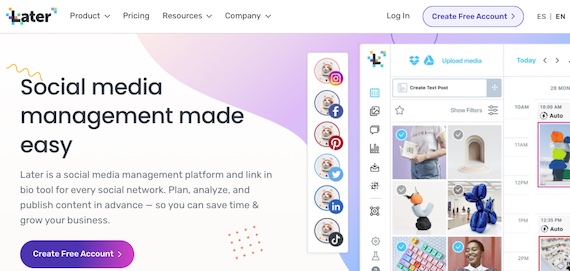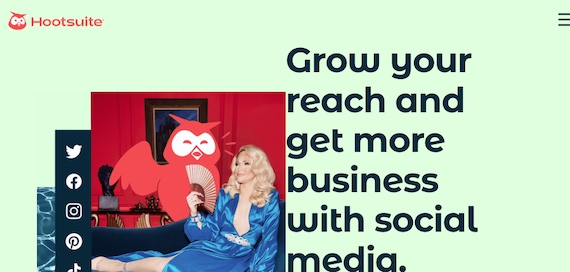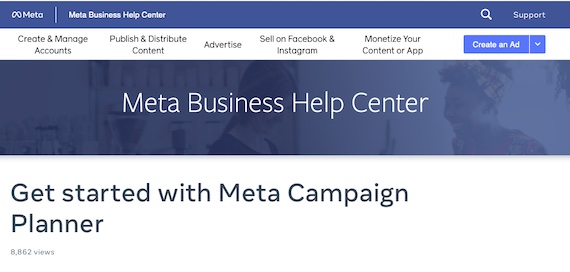Maintaining a flow of content across social media accounts can easily be a full-time job. Third-party scheduling tools can help by eliminating manual posts on native platforms.
But which tool is right for your business?
The choice is surprisingly complex, with each tool accessing different social channels and offering unique features, such as tagging products, scheduling reels, auto-posting to TikTok, and syncing bio links.
In this article, I’ll look at four popular scheduling tools, offering the pros and cons of each. They are:
- Later,
- Buffer,
- Hootsuite,
- Meta Campaign Planner.
Social Media Scheduling Tools
Later supports Instagram, Facebook, TikTok, LinkedIn, Pinterest, and Twitter.
Later owns Linktree, the link-in-bio tool, facilitating a handy integration to add links to each post. Later also (i) schedules Stories and tags products on Instagram and (ii) recently launched auto-publish on TikTok.
On the downside, Later doesn’t support tagging products on Facebook and, unlike some of its competitors, doesn’t support scheduling for Google Business profiles or YouTube.
Later’s free plan includes one account for each platform, 10 posts per profile, and one user. Paid plans start at $18 per month, including access to Linktree and 30 scheduled posts per month.
—
Buffer is one of the original dedicated scheduling tools — supporting Instagram, Facebook, TikTok, Linkedin, Pinterest, Twitter, and Google Business profiles.
Buffer supports Google Business profiles and Facebook groups in addition to pages. Canva users will love Buffer’s time-saving integration, and Shopify merchants can benefit from integrated social analytics for a full customer journey view — from social to store.
However, Buffer’s link-in-bio tool — “Start Page” — is clunkier than Later’s. Buffer does not support product tagging on Instagram or automatic publishing to TikTok.
Buffer’s free plan includes three channels, each with 10 scheduled posts. Paid plans include analytics and engagement tools and start at $5 per month per channel.
—
Hootsuite supports the most channels on this list — Instagram, Facebook, Twitter, YouTube, LinkedIn, Pinterest, and TikTok. Scheduling is also available for Facebook groups and Google Business profiles, and automatic publishing to TikTok.
Hootsuite supports product tagging on Instagram, and it integrates with Canva. Hootsuite does not offer product tagging for Facebook and automatic publishing for Facebook Stories.
Hootsuite can be expensive compared to other options. Free plans support two channels, each with five scheduled posts. Paid plans start at $49 per month for one user, 10 accounts, and unlimited scheduled posts. Incorporating a third-party link-in-bio app is extra.
—
Meta Campaign Planner. Meta’s own scheduling tool supports posting to Facebook and Instagram pages. Some social media observers suspect Meta rewards users who post via its native platform. Thus businesses primarily active on Facebook and Instagram may want to keep that in mind.
Meta Campaign Planner is the only tool I’ve found that tags products on both Facebook and Instagram, key for merchants who rely on traffic from those channels. Meta Planner also schedules Stories and, helpfully, includes an A/B testing feature.
The drawback is Planner only supports Facebook and Instagram (although not Facebook groups). And there’s no integrated link-in-bio solution.
As for price, Meta Planner is entirely free.
My Choice
Meta’s scheduling tool is hard to beat for businesses focused on Facebook and Instagram. But if Facebook groups are important, consider Buffer or Hootsuite.
However, Later’s scalable scheduling and access to the latest Instagram and TikTok features make it my top choice.








